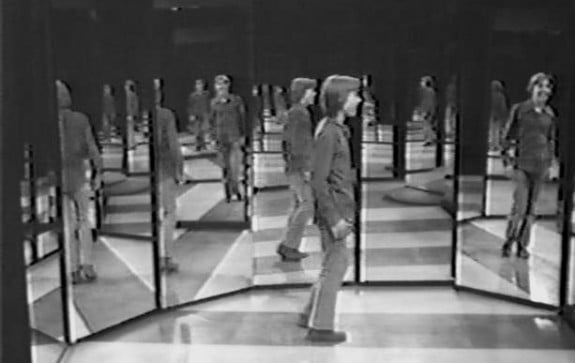That describes what is happening increasingly in our culture, particularly in our use and consumption of media. We get our news from sources that reinforce our worldview, and then we share it with like-minded people on social media, who just reaffirm what we think we already know to be true.
It’s unhealthy—and, I think, dangerous. David Carr writes about this phenomenon in The New York Times:
The village common — you know, that place where we all meet to discuss our problems, relying on the same set of facts — has shrunk to the size of a postage stamp, surrounded by the huge gated communities of like minds who never venture into the great beyond.
But if you look past cable, talk radio and traditional media, there is another layer of self-reinforcing messages that may be having an impact. As Eli Pariser described in “The Filter Bubble,” search companies rely on algorithms to predict what users want to see based on past clicks, meaning that users are moved farther away from information streams that don’t fit their ideological bent.
To put it another way, you and I might find very different results when we enter the word “shutdown” on Google. The skillful custodians of search can produce what Mr. Pariser describes as “personal ecosystems of information.”
To take that one step further, think of your Facebook feed or your Twitter account, if you have either. When you pick people to follow, do you select from all over the map, or mostly from among those whose views on culture and politics tend to align with your own? Thought so.
Unless you make a conscious effort to diversify your feeds, what you see in your social media stream is often a reflection, even amplification, of what you already believe. It’s a choir that preaches to itself.
In the spirit of real discussion, I decided to leave my lane, if that’s what it is, and talk to John Podhoretz, a twice-a-week columnist for The New York Post and the editor of Commentary magazine. He’s a conservative, but not a strict ideologue, as evidenced by the recent scolding he issued in The Post to “my fellow conservatives who are acting as the enablers for irresponsible G.O.P. politicians.”
“Right now, people have more choices than they have ever had,” he told me. “Hannity and Maddow are right next to each other on the cable dial. But what makes it different is how unwelcoming everyone is to everyone else. People just don’t cross over in their habits, or if they do, they are made to feel very uncomfortable.”
“What’s different is the intensity level, the level of vituperation,” he said, adding that he had been on the receiving end of some of that by suggesting that the Tea Party was goading fellow Republicans into a suicide mission. “You can dial up the intensity level by following 200 more people who think like you on Twitter or by turning on MSNBC or Fox News.”
More often than not, when we tune in to cable or fire up the Web, we are staring into the mirror, not looking out a window. If we did look out a window, we’d see government officials talking past and around one another as they all fall down a flight of stairs, perhaps a perfect reflection of the people they represent.
Modern narcissism, of course, is also infecting our spiritual lives. But don’t take my word for it. Check out this important book, by one of my favorite writers.
















